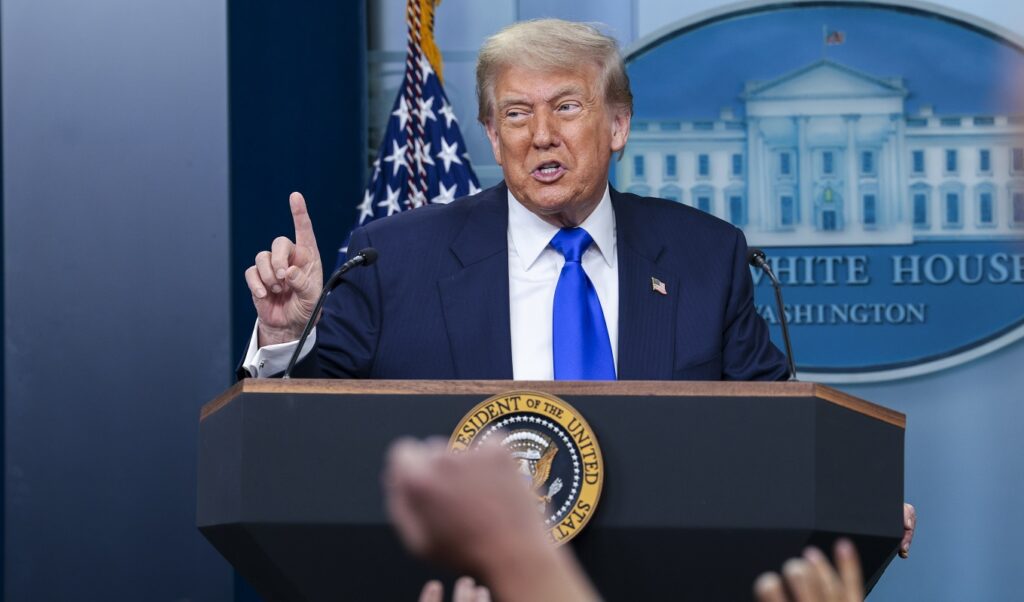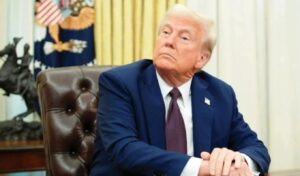The first 90-day “window” of suspension in the implementation of the sweeping tariffs that Donald Trump had announced on “Liberation Day” on April 2nd officially closed yesterday, Wednesday (9/7). While great optimism was expressed during this interim period (which was extended until August 1st, though it’s not considered the strictest of timelines), ranging from the conclusion of “90 trade deals in 90 days” (see interview with White House trade advisor Peter Navarro on Fox News) to even 200 deals, as the American president himself stated in late April when the first days of his term were being completed, such expectations ultimately weren’t confirmed: so far, three agreements have been concluded: China (a framework agreement that “opened” the path for American companies to access rare earth elements), the United Kingdom, and Vietnam.
Sources cited by CNN report that the American president initially expected to complete more trade agreements by Wednesday’s deadline, but in recent weeks has become convinced that achieving these agreements cannot be done faster. Seeing this scenario, the White House occupant began this week delivering letters implementing new tariff rates, effective August 1st. It’s worth noting that – perhaps as a result of unsuccessful negotiations – the new rates are not necessarily identical to those announced in April: Japan and South Korea, for example, will face 25% tariffs from August 1st for their products’ access to the American market, while in April the rates were 24%. This sends a message that the optimal solution is concluding agreements to avoid higher tariff percentages, even compared to the already increased rates from “Liberation Day.”
Read: Trump: Behind the scenes of tariff deadline extension – They will begin August 1st
Tariffs: US and EU close to agreement
Special mention must be made of the European Union, which appears to be operating (as institutionally provided) en bloc to conclude an agreement with Washington. Until the time of writing, the EU has not received a letter regarding what will apply from August 1st, while American media unanimously report that Brussels and Washington are on the verge of a trade agreement, something that appears to be confirmed by European officials’ statements. According to American media, the deadline extension until August 1st was based on ongoing discussions with the EU, while Politico reported days ago that what has been proposed is a basic 10% tariff (versus the 20% imposed in April) and exemptions in certain sensitive sectors. Meanwhile, the EU is seeking tariff relief on specialized items like steel and automobiles, which certainly has significance for Germany. Exemptions also appear to be sought for other goods including aircraft, aircraft parts, as well as wine and spirits, with French interest being evident.
The EU’s effort to achieve a trade agreement with the US with the lowest possible tariffs was emphasized Thursday by European Commission President Ursula von der Leyen. Von der Leyen stressed that the European Union is “working tirelessly” to achieve an agreement, Reuters notes.
The “front” with Brazil and messages to India
Among the countries that the American president appears to be targeting are the BRICS, with threats of additional 10% tariffs if they adopt “anti-American policies” mentioned earlier this week. In this group, there was an escalation of confrontation, with Brazil being the first to come under fire. As the American president announced, from August 1st Brazil will face 50% tariffs, while in the letter, Trump expressed support for former president Jair Bolsonaro, who is being tried for alleged coup attempt. This reference caused further tension in bilateral relations, with Brazilian president Lula, who chairs this year’s BRICS summit, responding sharply, characterizing Trump’s statements as “non-serious,” warning that countries have the right to respond with countermeasures. Additionally, he rejected comments supporting Bolsonaro, stating that no country has the right to interfere in Brazil’s internal affairs.
Special mention must also be made of India, which was considered a potential partner that would close a deal with Washington. The BRICS threat came just one day after the US leader stated he was close to finalizing a trade agreement that New Delhi hopes will give it suspension from mutual 26% tariffs. After all, New Delhi wasn’t adopting the “hardest line” that Brazil and South Africa adopted against Washington. However, negotiations aren’t the easiest, according to CNN.
What the data shows about US GDP and market reaction
In the US, the most recent employment report showed minimal to zero growth in sectors like trade and construction, industries significantly affected by tariffs. US GDP decreased by 0.5% in the first quarter of the year, according to data from the US Commerce Department report released last month.
In any case, however, and despite messages that August 1st may indeed be the day of implementing increased tariffs, markets are reacting much more mildly compared to April. The only exception was copper, which saw its price soar after Trump’s announcement this week of 50% tariffs on its import to the American market to encourage domestic production. Thus, the day after the first announcements concerning Tokyo and Seoul, the Japanese Nikkei rose 0.3%, the South Korean Kospi 1.8%, and the STOXX Europe 600 (a stock index representing Europe’s 600 largest companies by market capitalization) recorded a 0.33% rise. Similarly, after April’s shock, Wall Street closed an impressive second quarter of 2025 with new profitability records (the S&P 500, which tracks the stocks of the top 500 listed American companies, closed June with a 24.5% rise from its April 8th low).




